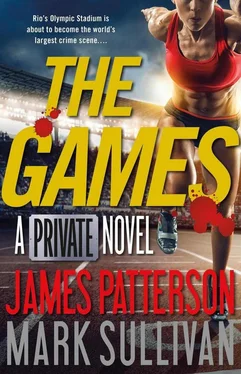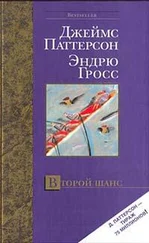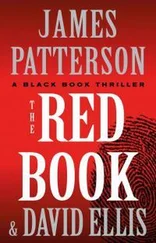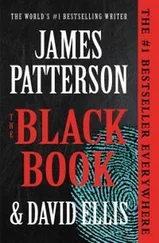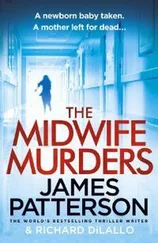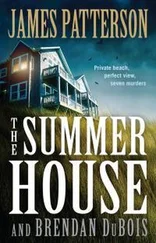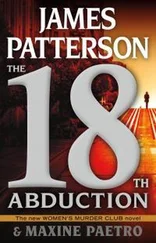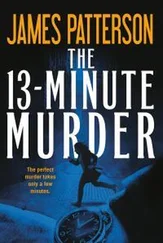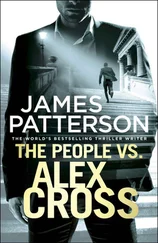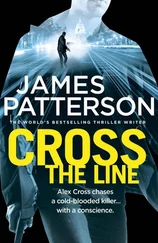Castro had bought the Freefly drone on the Internet for $8,495. It was worth every penny. With a fold-up design, collapsible struts, and five propellers, the drone could carry a payload of fifteen pounds for more than ten miles.
The doctor’s delivery system weighed in at a little over ten pounds, and the Freefly didn’t need to carry it more than five miles. Castro felt confident knowing he had more than enough fuel and power to reach the stadium and get the job done right.
He folded the struts and props so he could get the drone up through the hatch and carefully set it on the Christ’s right arm. The doctor glanced down at the two NBC employees more than one hundred feet below him.
One of them was taking a piss off the side of the terrace.
The other one was still looking at his iPad and said, “It’s starting.”
Perfect , Dr. Castro thought as he snapped the drone’s arms quietly into place. We’ll be fashionably late, coming to the show with the last of the stragglers, making it a full house.
Castro gave the Freefly a command through his phone. The battery-driven motors started up. The propellers slowly turned.
The doctor reached around to arrange the hoses and airbrushes one last time. Taking a deep breath, he said, “Boa viagem.”
Castro got the joystick control. He increased the power until the propellers were a blur and watched with delight as the drone lifted off with its precious load.
When the Freefly was ten feet overhead, the doctor used the joystick to send the drone north and at an angle to the southeast wind. With the black-mesh hammock, the nine hoses, and the airbrushes dangling below the drone, he thought it looked kind of like a jellyfish as it left the spotlights for the darkness.
“Hey!” someone yelled.
Dr. Castro twisted and looked down, saw the two from NBC looking up at him. He had a moment of panic, but then decided to ignore them.
There was no way they could get inside the statue in the fifteen or twenty minutes it would take for the drone to fly the five miles. There was no way to stop him until it was too late. But just in case, Castro picked up his phone and called up another feature on the drone’s navigation app.
“Hey, what the hell are you doing up there?” one of the men shouted.
The doctor wanted to watch the screen of his phone, wanted to stay glued to the feed from the GoPro, seeing the lights of Maracanã Stadium out there in the distance already.
But he turned his head and looked down.
The cameraman had aimed his lens up at Castro. The producer was on a phone talking excitedly.
It doesn’t matter, Castro thought. Nothing matters any—
He heard the thumping of a helicopter in the darkness to his west but couldn’t make out running lights. It was circling and coming closer.
Dr. Castro didn’t try to duck down or hide. He was done hiding.
Using the joystick, flying the drone, the doctor felt totally at peace with his decisions, no fear now, no regrets now.
None at all.
“Son of a bitch, there he is,” said Lieutenant Acosta, who sat beside me in the copilot’s seat of the police helicopter looking through high-powered binoculars.
“You have eyes on him?” da Silva demanded over the radio.
“Affirmative, General,” Acosta said. “Right where Mo-bot spotted him.”
“Where’s the rocket?”
“I don’t see any rocket.”
“Then get closer, goddamn it, and throw your lights on him. And put on your radar and the camera, Jack. I want to see what you’re seeing.”
The Brazilian military helicopter had a millimeter-wave radar system and optical and infrared cameras mounted below the nose.
I turned them on and immediately heard blip!
I took my eyes off the statue and glanced at the screen. Blip! Blip! It was small, moving slowly right along the tops of the trees. It vanished then, and I figured it for a big bird of some kind.
“I can’t see any rocket,” Lieutenant Acosta said, drawing me off the radar screen.
“Has he already launched it?” General da Silva asked.
“No, we would have seen it take off,” I said, picking up speed, turning on the spotlight beam, and flying straight at Christ the Redeemer.
I slowed the chopper and hovered one hundred feet from the outstretched arms of the Christ. Even with the gray outfit and the matching paint on his face, you couldn’t miss Castro’s head, shoulders, and torso sticking up out of the arm.
He wasn’t looking our way. His head was down. His hands were busy.
“What’s he doing?” I asked.
Pistol drawn and in his lap, Acosta peered through the binoculars. “He’s looking at a large iPhone on the arm in front of him, and he’s using a control of some sort with a joystick.”
I thought of the blips back there on the radar. Small. Slow speed. Right at the treetops. I felt sick.
“It’s not a rocket,” I said. “He’s flying a drone.”
“Shoot him,” General da Silva said over our headsets.
“General?”
“Put a bullet in his head,” da Silva said. “Then get control of that goddamned drone.”
I had a handful of reasons why I thought that killing Castro wasn’t the best idea. I angled the spotlight directly on the doctor before handing the microphone to Lieutenant Acosta. “Call him by name. Tell him to bring the drone back and surrender.”
Acosta said, “Dr. Castro, this is the federal police. Bring back the drone or you will be shot.”
The doctor stared at us blankly, then he nodded and put the joystick down. He touched the screen of his phone with his left hand at the same time he reached below the hatch rim with his right.
Castro came up with a pistol, aimed it at us, and fired three quick times.
All three bullets went through the windshield.
Acosta roared out in pain, “I’m hit!”
Dr. Castro saw the bullets strike the windshield and watched the cop in the passenger seat jerk on impact. He swung his gun toward the pilot, but the chopper pulled away hard. He shot at the rear rotor as it retreated but missed.
Castro glanced at the image from the GoPro on his phone screen; the stadium was much closer. Distance to target: 2.9 miles. ETA: eleven minutes.
He looked up, hoping to see the helicopter heading toward a hospital, but it wasn’t. The chopper was taking a wide loop around the statue, too far for him to shoot. Could he keep them at bay, circling for eleven minutes?
Castro believed he could, though he was certain he would die soon, and not from Hydra-9. He’d shot at a military police helicopter. The men in the helicopter somehow knew about the virus.
They would try to kill him to get control of the drone. But the doctor knew that was an impossibility. There was nothing they could do now to stop it. The statue was locked. They might try to land on the other arm, but no. Who would get out? Not the cop with the bullet in him. And not the pilot.
The helicopter was to Castro’s right now, some two hundred yards, searchlight off. It changed direction and closed the distance at an angle slightly to his rear, back toward the Christ’s head.
The doctor grabbed the joystick control and flung it into space, then he twisted around, swung the pistol toward the chopper, and started firing.
Castro fired five times. All five bullets missed the mark, though one hit the helicopter’s landing strut and another the lower fuselage. The doctor thumbed the latch that dropped the clip. He groped for another.
“Kill him,” I said.
“I can’t,” Acosta said.
One of the doctor’s first shots had hit the lieutenant in the right shoulder. He was trying to support his quivering arm with his left hand enough so that he could get a decent sight picture on Castro.
Читать дальше
